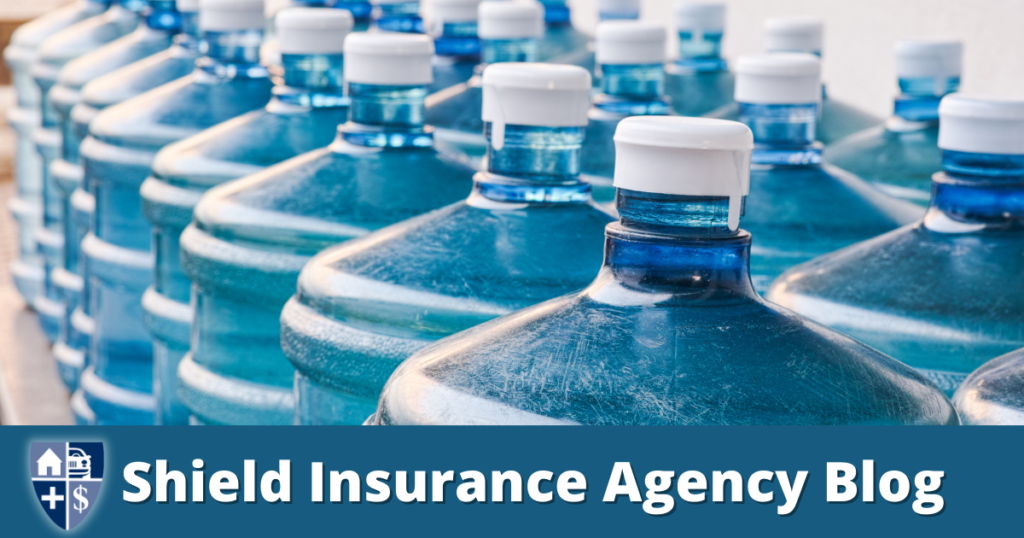Foremost Creative Team | Emergency Water | Flood Insurance | Comparison Quoting Portal
The loss of safe drinking water is deadly. Most individuals will begin to experience side effects from dehydration after 36 hours. Starvation can be delayed by several days or weeks provided there is an ample, safe emergency water supply.
At the bare minimum, you should store one gallon, per person, per day, for seven days. A three-week supply is ideal.
After an earthquake, city water is vulnerable to contaminants through ruptured pipes and adulterated filtering systems. Do not take adequate water supplies for granted. If you store an ample amount for your family beforehand, you’ve already greatly increased your family’s chance of survival after an earthquake.
Proper Water Storage
Most grocery stores sell water in one or two-gallon containers. These are not designed for long-term storage and will leak after six months. Your best option is to purchase one to five-gallon sealable containers of water from your local camping store. All stored water must be in a sanitized container and the water must be treated to avoid contamination by bacteria and algae. If you are storing your own water, treat the water as soon as you store it in the container with eight drops of pure, unscented liquid bleach per gallon of water. You must also rotate your water supply every six months, which includes store-bought treated water as well as the water you’ve treated yourself.
If your water supply is questionable, use these methods to treat it:
The best option: Add liquid chlorine bleach – eight drops per gallon of water. Double this amount if the water is cloudy.
A good option: Add 2% tincture of iodine to the water, or twelve drops per gallon of water. Double this amount if the water is cloudy.
An acceptable option: Boil the water vigorously for 10 minutes.
Dirty water should be strained through cheesecloth, a paper towel or a coffee filter before treating it to remove suspended matter. Wash and sanitize all food containers before use by washing them with warm, soapy water followed by a 10% bleach solution. Empty the bleach out after a five-minute soak, and let dry.
Emergency Water Sanitation
As part of your earthquake supply list, it’s also key to provide sanitation items. Having these materials staves off infection or illness that is caused by unsanitary conditions, and also makes a stay at a shelter or other unfamiliar or rustic territory more comfortable and worry-free. Store these items in your equipment kit as well:
- Plastic bags – heavy-duty garbage can size and small, zip-lock types
- Powdered chlorine lime – proper storage is required. This is an oxidizer and it’s corrosive.
- Portable camp toilet with chemicals
- Toilet paper
- Handi-Wipes for water-free cleaning
- Shampoo, toothpaste, deodorant, tampons, and sanitary napkins
- Insect, fly, mosquito, and ant spray
For more information on Emergency Water Storage visit these sites:
More interesting reads by Shield Insurance Agency
- Do You Need Recreational Insurance for Your Snowmobile in Michigan?
- The Importance of Giving Back During the Holiday Season
- Michigan Winter Driving: Essential Snow & Ice Safety Tips You Need to Know
- How Renters Insurance Can Save the Day During a Break-In
- The Hudsonville Annual Tree Lighting & Nighttime Holiday Parade was Magic.



















































